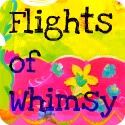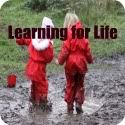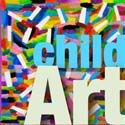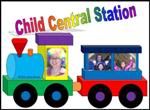Why all the fuss about outdoor play?
Over the years, our preschool has developed a strong committment to embracing the value of outdoor play and learning. This undertaking has largely been driven by the emergence of significant research evidence which underscores the many developmental benefits afforded to children when they are given regular opportunities to connect with the natural world.
Suggested further reading:
Peter Gray, ‘Free to Learn’
https://www.amazon.com/Free-Learn-Unleashing-Instinct-Self-Reliant/dp/0465025994
Richard Louv, ‘Last Child in the Woods: Saving our Children from Nature-Deficit Disorder’
https://www.amazon.com/Last-Child-Woods-Children-Nature-Deficit/dp/156512605X
Accordingly, this research has influenced policy makers and curriculum framework creators. All Australian early childhood services that are regulated by the National Quality Framework are encouraged to provide children with access to the outdoor environment at all times. In fact, to do so is regarded as a hallmark of high quality. The Guide to the National Quality Standard affirms that, “Wherever possible, children need opportunities to be outdoors as much as indoors. “This can be achieved with well-designed integrated indoor and outdoor environments that are available at the same time” (p.89).
ACECQA (2013). ‘Guide to the National Quality Standard’.
http://files.acecqa.gov.au/files/National-Quality-Framework-Resources-Kit/NQF03-Guide-to-NQS-130902.pdf
Why introduce risk into the preschool setting?
The natural environment affords children many opportunities to develop knowledge and skills which will help them cultivate and sustain their emerging autonomy, resilience, and a capacity to assess and manage risk during play. In essence, the skills required to manage risk constitute critical life skills which should be thoughtfully considered when educators program for children. The process of living is never without risk and it seems completely absurd to withhold that knowledge from a particularly vulnerable demographic. As parents and educators, it is important that we provide children with appropriate opportunities to identify and respond to their innate ‘fight-or-flight’ response; that uncomfortable ‘gut’ feeling that represents our own natural warning system. In fact, we actually do children a grave disservice when we attempt to eliminate all risk from their lives. Whilst the intentions are benevolent, the outcomes are disadvantageous.
The national Early Years Learning Framework supports the notion of exposing children to appropriate levels of challenge in order to enhance their developing competence in assessing and managing risk:
Outcome 1
Children develop their emerging autonomy, interdependence, resilience and sense of agency when they take considered risks in their decision-making and cope with the unexpected (DEEWR, 2009, p. 22).
Outcome 3
Children become strong in their social and emotional wellbeing when they make choices, accept challenges, take considered risks, manage change and cope with frustrations and the unexpected (DEEWR, 2009, p. 31)
Outcome 4
Achieved when educators: “plan learning environments with appropriate levels of challenge where children are encouraged to explore, experiment and take appropriate risks in their learning” (DEEWR, 2009, p. 35)
DEEWR (2009) Belonging, Being and Becoming: The Early Years Learning Framework for Australia.
https://docs.education.gov.au/system/files/doc/other/belonging_being_and_becoming_
the_early_years_learning_framework_for_australia.pdf
Why provide children with access to fire?
Harnessing and manipulating fire is a quintessential human activity. Historically, all cultures have been fuelled by fire, invoking an extraordinary range of traditions. Beyond intellect and language, the ability to control and manage fire is an achievement that has set humans apart from all other animal species.
In 2013, Jerry Adler wrote, “Wherever humans have gone in the world, they have carried with them two things, language and fire. As they travelled through tropical forests they hoarded the precious embers of old fires and sheltered them from downpours. When they settled the barren Arctic, they took with them the memory of fire, and recreated it in stoneware vessels filled with animal fat. Darwin himself considered these the two most significant achievements of humanity. It is, of course, impossible to imagine a human society that does not have language, but—given the right climate and an adequacy of raw wild food—could there be a primitive tribe that survives without cooking? In fact, no such people have ever been found.”
Adler, J. (2013) ‘Why Fire Makes us Human’ Smithsonian Magazine, June Issue.
http://www.smithsonianmag.com/science-nature/why-fire-makes-us-human-72989884/
Historically, fire is fundamental to our sense of ‘belonging’ and constitutes a link to our evolutionary success as a species. Glenn Kelly, a Nyungar Aboriginal and an environmental scientist from Western Australia, offers an Indigenous perspective on fire:
“’Karl’ (fire) is at the very heart of our culture. In our language, ‘karl’ not only describes fire, but also our immediate or nuclear family. This is referred to as ‘hearth’ in academic circles. It represents the importance of fire as a centrepiece for family and daily necessities of life, such as cooking, warmth and light. An extension of this is ‘karlup’, the name given to my home country. Literally translated, it is the place of my fire, my family place, my home.
Fire and smoke also have a prominent position in our ceremonies. While light is the most important thing a fire provides, the smoke can also be used to cleanse spirit. Even in contemporary times, fire remains at the centre of family and other gatherings.”
Kelly, G. ‘Karla Wongi Fire Talk.’
https://www.dpaw.wa.gov.au/images/documents/fire/karla-wongi-fire-talk.pdf
How might preschool children benefit from experiences with fire?
- A fire gathering has the potential to enhance a sense of belonging and partnership within a community.
- Fire symbolises important aspects of our history and culture, and by providing children with fire experiences we are continuing this long tradition.
- Experiences with fire will enable links to learning in relation to Australia’s Indigenous history and contemporary Indigenous spiritual practices.
- For many children, lighting a fire and cooking in the outdoors will be an exciting new and rewarding experience.
- Bushfires are a relatively common occurrence within the Australia landscape and fire safety awareness is a valid addition to any educational program provided for young children.
- Experiences with fire will facilitate links to learning regarding the impact bushfires can have on the natural landscape inclusive of the flora and fauna.
- Lighting a fire with children provides an opportunity for them to directly experience and gain knowledge about the nature of an open flame within a safe and controlled environment.
- Lighting a fire with children provides them with an opportunity to develop a healthy respect for fire and the necessary skills to keep themselves safe around fire.
- Experiences with fire will help facilitate links to learning about fire safety procedures around the home and within the neighbouring community.
DET Vic. ‘Fire Awareness for Children: Prep – Grade 6.’
http://www.education.vic.gov.au/Documents/school/teachers/health/fireawarep6.pdf
CFA Vic. ‘Junior Fire Safe: Teacher Resource for Years Prep to 2.’
http://www.cfa.vic.gov.au/fm_files/attachments/kids_and_schools/junior_fire_safe_complete.pdf
Where and how do we start?
The proposition of introducing fire into an ECE setting is not something to be broached lightly or without the accompaniment of a considerable amount of deliberation, research and planning. Ideally, it should be undertaken as a collaborative endeavour engaging all relevant participants in the decision making process. It is vital that participants are able to work cooperatively as a team to consolidate a comprehensive understanding of the implications of the proposal. Together, they must formulate and approve an official set of procedures and/or guidelines to inform practice. It is crucial that the team are able to validate why they believe the introduction of fire is an important addition to the children’s program and demonstrate that they have made an assessment confirming that the perceived benefits outweigh the associated risks.
Our service generated the following policy documents to guide practice:
- MANAGING RISK IN PLAY PROVISION POLICY
- RISK-BENEFIT ASSESSMENT FOR FIRE-PIT USE
- DYNAMIC RISK-BENEFIT FLOW CHART
You may find the following document to be a useful guide:
Ball, D., Gill, T., & Spiegal, B. (2012). ‘Managing Risk in Play Provision’ (Play England).
http://www.playengland.org.uk/media/172644/managing-risk-in-play-provision.pdf

It is essential that you consult with your local council laws regarding open air burning. Our service is located within the Shire of Yarra Ranges and we were able to obtain the following documentation online:
Open Air Burning Local Law 2007
Open Air Burning: Residential Bushland Areas
http://www.yarraranges.vic.gov.au/files/assets/public/webdocuments/planning-building-health/community-compliance/policies-strategies-community-compliance/residential_bushland_areas.pdf
For many educators, the prospect of formulating the required documentation necessary for getting a fire-pit up and running may present as a daunting process, however, I can assure you that the hard work is without question, well worth it. The children and staff at our service have absolutely loved incorporating fire into our outdoor program and together, they have gained much from the experience. On a personal level, it put a huge smile on my face the first day I headed for home with the smell of fire permeating my hair and clothing. It embodied the lingering evidence of a wonderful day spent outdoors with the children. For an early childhood educator, what could possibly be more captivating and rewarding?









































